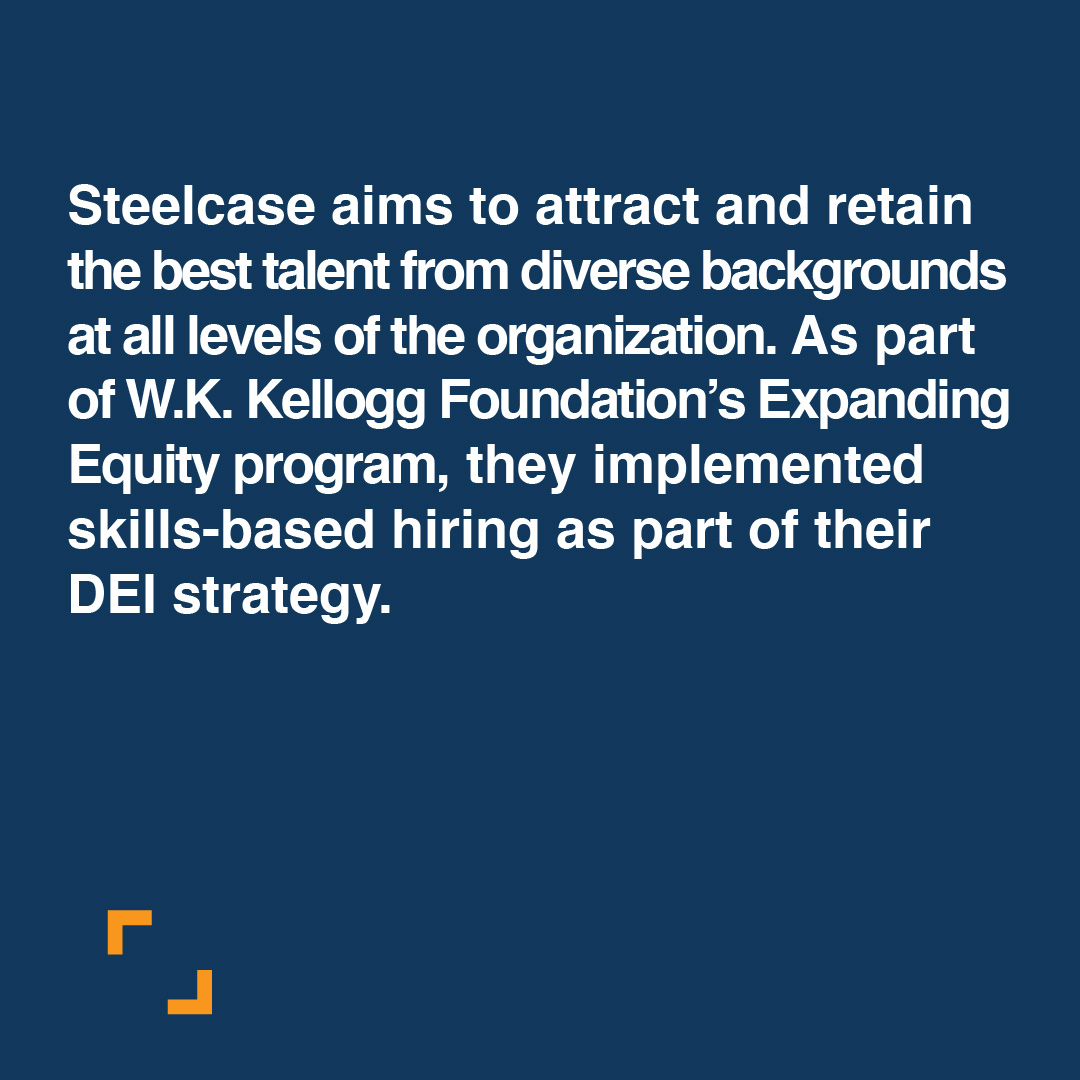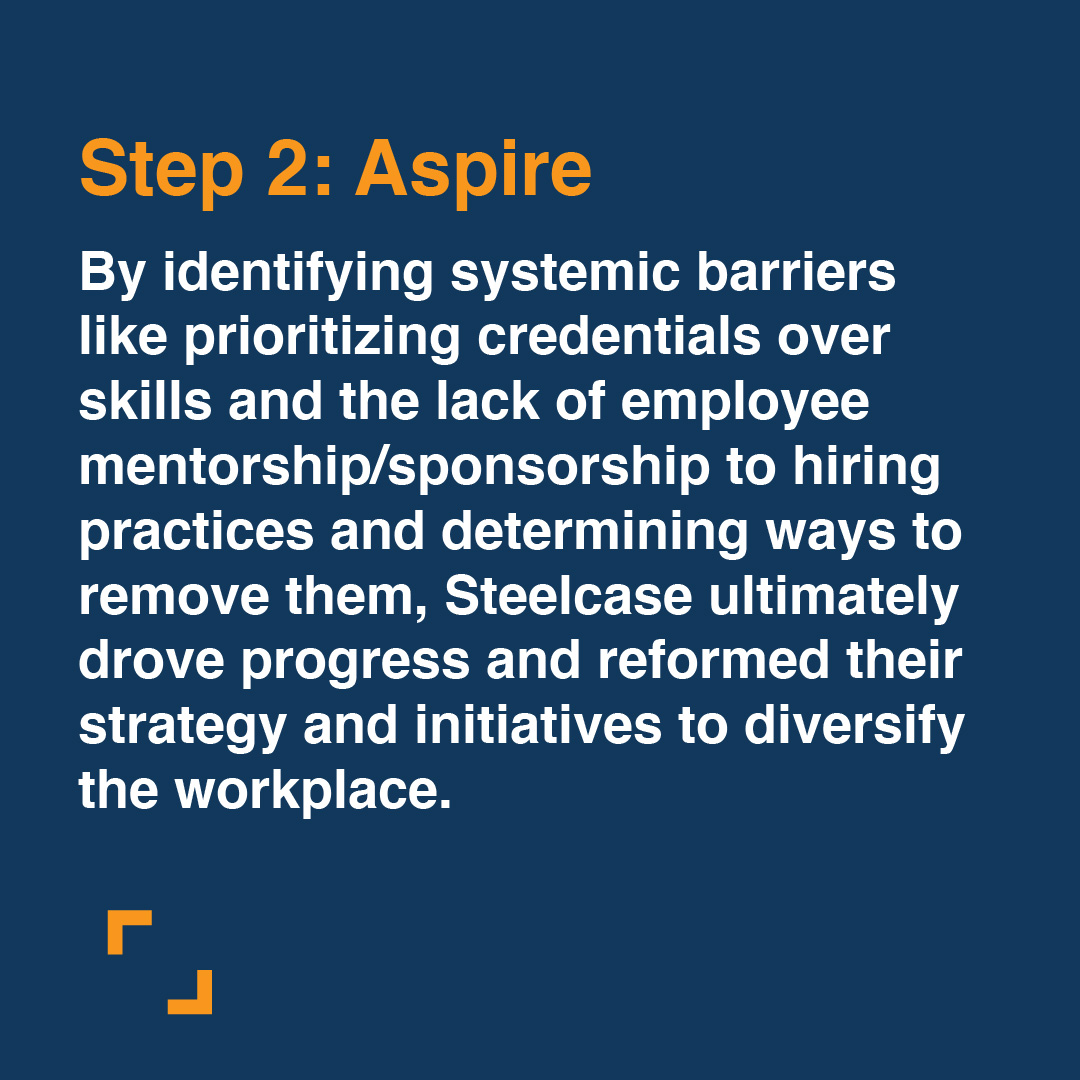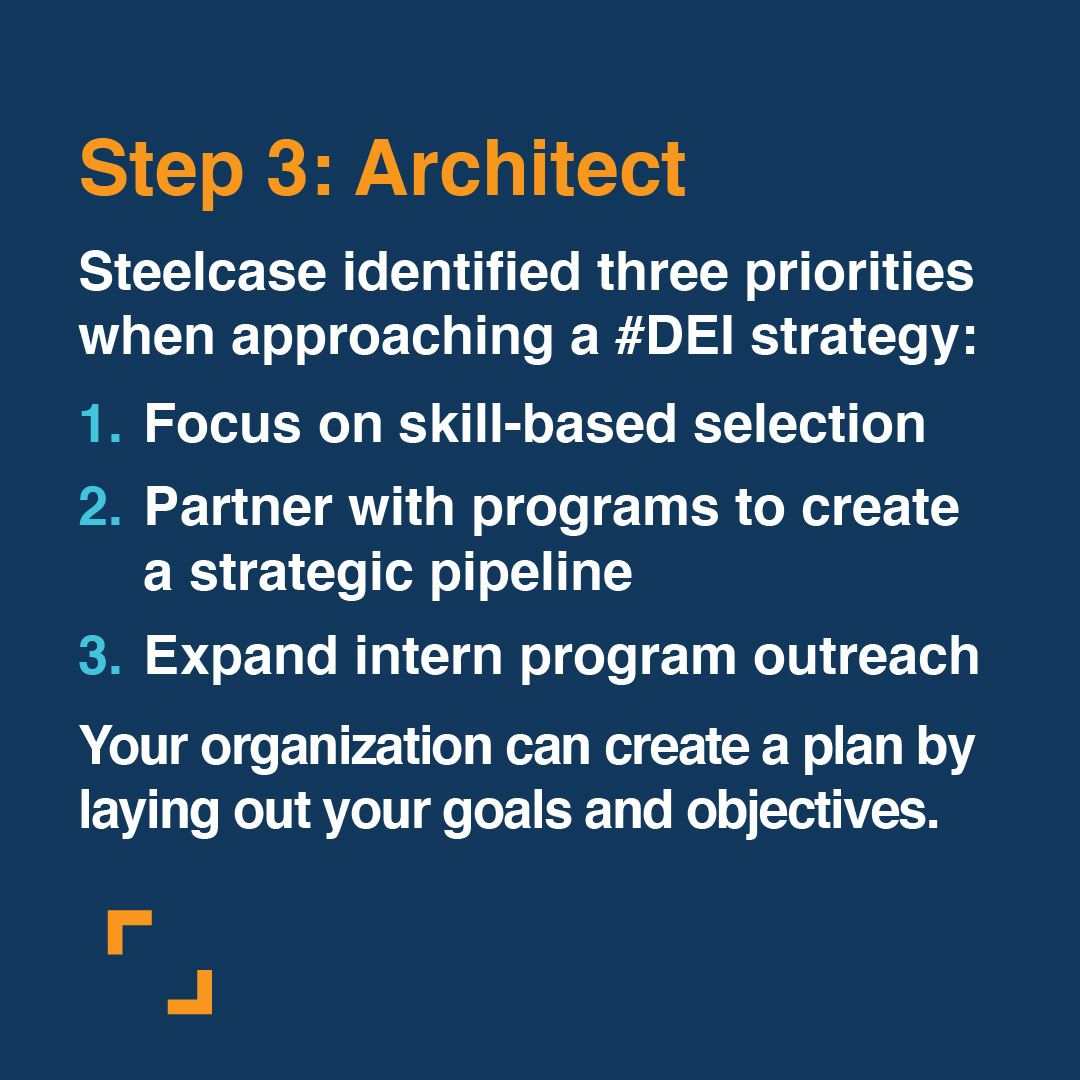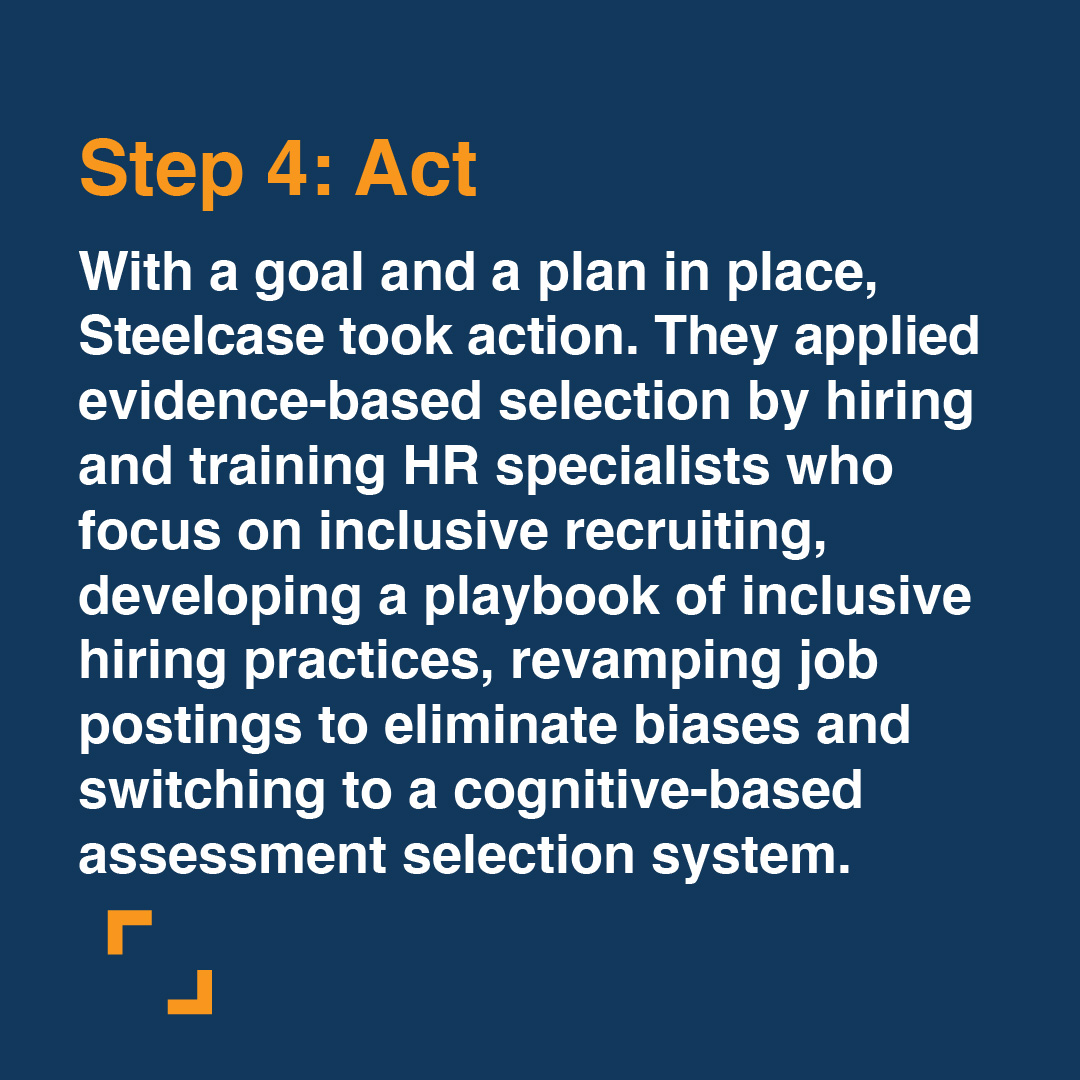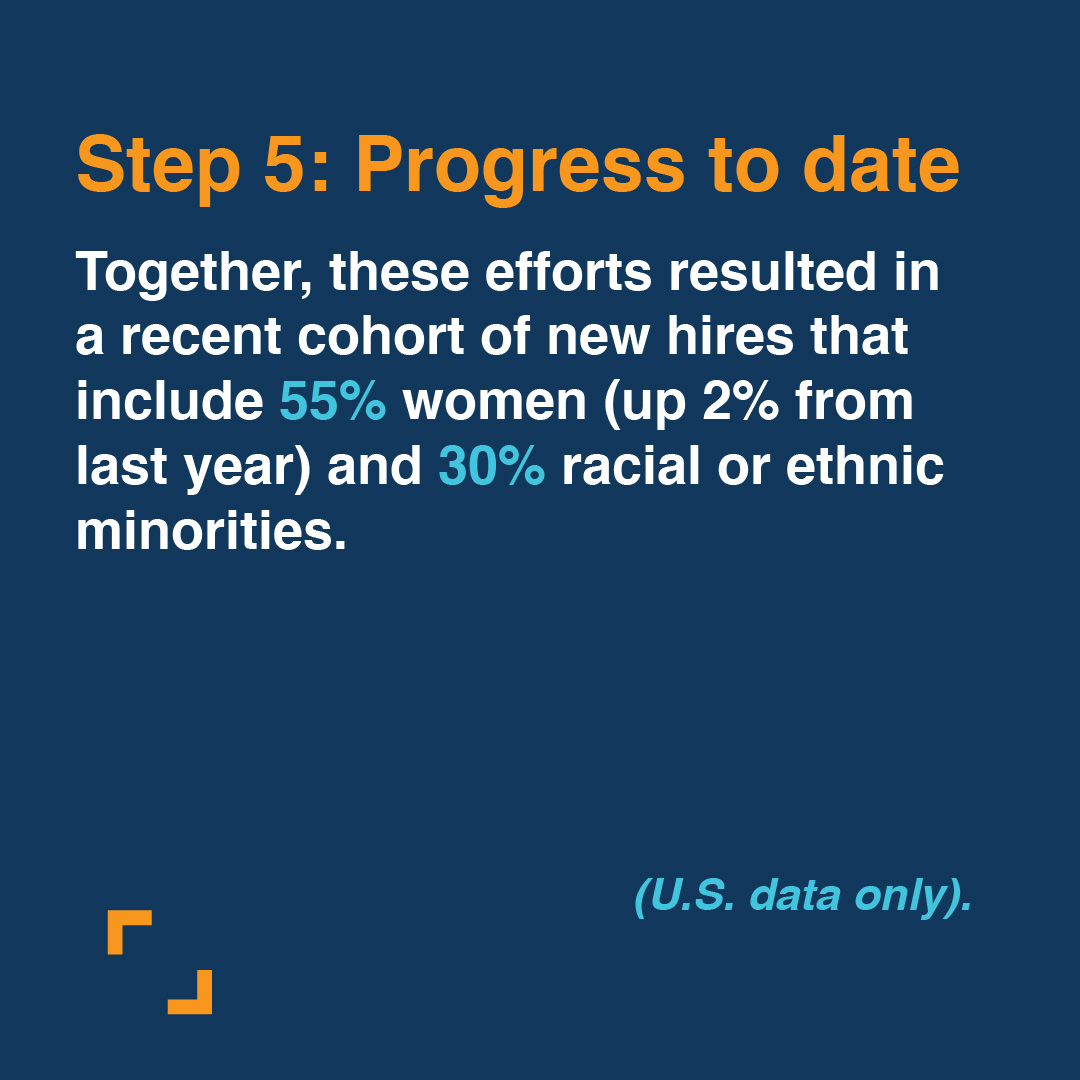Our DEI strategy is a key organizational capability as we aspire to create a culture of belonging that reflects the communities in which we live and work… we are always looking to be better at what we do.
Isabel Mendellin, global director DEI & talent acquisition at Steelcase
Steelcase Case Study
This case study lifts up actions from Expanding Equity’s (EE) Attract pillar, which focuses on attracting qualified talent to apply for open roles in the organization to increase diverse representation at all levels of the organization. It features EE network member Steelcase.
In striving to build an equitable place of opportunity, Steelcase aims to attract and retain the best talent from diverse backgrounds at all levels of the organization. Steelcase, a global leader in the office furniture industry, set out to implement a diversity, equity and inclusion (DEI) strategy, recognizing that building a diverse workforce means going beyond traditional hiring practices.
In developing this strategy, Steelcase set up goals that prioritize skills-based hiring and expand the pool of talent from which it can hire.
To implement this, Steelcase took the following actions:
- Created a deep data analysis system for hiring practices and listened to employees to understand the current state and to identify opportunities
- Researched best practices for skills-based hiring
- Created positions within HR specifically for people who specialize in developing new pipelines and sources for diverse talent
- Removed barriers to entry, such as industry experience, whenever possible
- Revamped job postings to eliminate biased language
- Shifted away from a “résumé and pedigree” focus to a skills and competency, evidence-based approach
- Developed a playbook on diverse hiring practices for hiring managers and recruiters
To sustain these efforts, the Steelcase global talent team redesigned its talent acquisition strategy and team structure, identified areas of focus for their recruiting practices, partnered across business units, and engaged current employees to involve them in the hiring process. These efforts resulted in a robust, standardized hiring process that uplifts evidence-based hiring while working to eliminate biases.
Along its journey, Steelcase highlighted three core takeaways it would recommend to other companies seeking to implement a similar initiative:
- Start small and learn quickly
- Favor progress over perfection
- Design a system approach to goal setting, measurement and progress tracking

